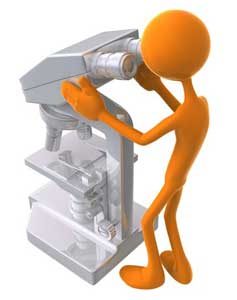Ergonomic Assessment
![]() The word “Ergonomics” comes from two Greek words “ergon,” meaning work, and “nomos” meaning laws. Today, ergonomics can simply be defined as the study of work and its effect on the human body.
The word “Ergonomics” comes from two Greek words “ergon,” meaning work, and “nomos” meaning laws. Today, ergonomics can simply be defined as the study of work and its effect on the human body.
Ergonomics is the science of fitting a job to the people who work in them. It focuses on job tasks, the work environment, and items such as the design and function of workstations, controls, displays, safety devices, tools, and lighting to fit the employee’s physical requirements, capabilities and limitations to ensure their health and well-being. Adapting the job to fit the worker can help reduce ergonomic related stresses and eliminate ergonomic disorders.
Ergonomics covers all aspects of a task whether it’s being performed at home, in an office or in an industrial environment, and prevents physical stresses on joints, muscles, nerves, tendons, and bones. It also addresses environmental factors that can affect hearing, vision, and general comfort and health.
Physical Stresses
 Physical stresses include repetitive motions such as those caused by typing or continual use of a hand tool. Other physical stresses include tasks involving vibration such as using a jackhammer, or tasks involving excessive force such as lifting a heavy box. Working in an awkward position such as holding a telephone to your ear with your shoulder can also cause problems. Repetitive motions, vibration, excessive force, and awkward positions are frequently linked to ergonomic disorders; however, the majority of “Cumulative Trauma Disorders” (CTDs) or “Repetitive Strain Injuries” (RSIs) such as carpal tunnel syndrome, tendonitis, tenosynovitis, thoracic outlet syndrome, and other musculoskeletal disorders (MSDs), are caused by repetitive motions that would not result in undue stress or harm if only performed once.
Physical stresses include repetitive motions such as those caused by typing or continual use of a hand tool. Other physical stresses include tasks involving vibration such as using a jackhammer, or tasks involving excessive force such as lifting a heavy box. Working in an awkward position such as holding a telephone to your ear with your shoulder can also cause problems. Repetitive motions, vibration, excessive force, and awkward positions are frequently linked to ergonomic disorders; however, the majority of “Cumulative Trauma Disorders” (CTDs) or “Repetitive Strain Injuries” (RSIs) such as carpal tunnel syndrome, tendonitis, tenosynovitis, thoracic outlet syndrome, and other musculoskeletal disorders (MSDs), are caused by repetitive motions that would not result in undue stress or harm if only performed once.
Environmental factors
Environmental factors include poor indoor air quality, excessive noise, excessive temperature, improper lighting, and other poor working conditions. These environmental factors may lead to headaches, fatigue, hearing loss, eyestrain, and even physical symptoms such as rashes and hives, which then can cause a person to work ineffectively resulting in poor ergonomic conditions that can lead to a more serious injury.
 It’s been repeatedly shown that poor ergonomic conditions in a workplace results in a decline in productivity and an increase in injuries. To ensure that workstations, equipment and processes are properly engineered to eliminate ergonomic disorders and maximize health, safety, comfort, and productivity, Total Environmental & Safety, LLC (Total) provides a broad spectrum of ergonomic auditing, consulting and training services. Our services are based on OSHA’s ergonomics guidelines that include four recommended elements; worksite analysis, hazard prevention, medical management, and training and education.
It’s been repeatedly shown that poor ergonomic conditions in a workplace results in a decline in productivity and an increase in injuries. To ensure that workstations, equipment and processes are properly engineered to eliminate ergonomic disorders and maximize health, safety, comfort, and productivity, Total Environmental & Safety, LLC (Total) provides a broad spectrum of ergonomic auditing, consulting and training services. Our services are based on OSHA’s ergonomics guidelines that include four recommended elements; worksite analysis, hazard prevention, medical management, and training and education.


